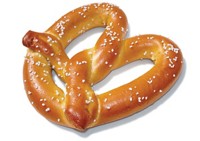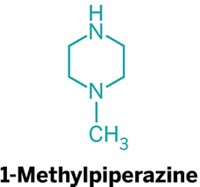Advertisement
Grab your lab coat. Let's get started
Welcome!
Welcome!
Create an account below to get 6 C&EN articles per month, receive newsletters and more - all free.
It seems this is your first time logging in online. Please enter the following information to continue.
As an ACS member you automatically get access to this site. All we need is few more details to create your reading experience.
Not you? Sign in with a different account.
Not you? Sign in with a different account.
ERROR 1
ERROR 1
ERROR 2
ERROR 2
ERROR 2
ERROR 2
ERROR 2
Password and Confirm password must match.
If you have an ACS member number, please enter it here so we can link this account to your membership. (optional)
ERROR 2
ACS values your privacy. By submitting your information, you are gaining access to C&EN and subscribing to our weekly newsletter. We use the information you provide to make your reading experience better, and we will never sell your data to third party members.
Inorganic Chemicals
What are deodorants and antiperspirants, and how do they fight sweat?
Controlling stink and soggy armpits for more than a century
by Sarah Everts
July 2, 2012
| A version of this story appeared in
Volume 90, Issue 27
For most of human history, people did very little to rein in their body’s ripe aroma. If anything, they washed periodically or tried to hide their odor by masking it with strong fragrances.
All that changed just over 100 years ago with the invention of deodorants and antiperspirants. These products differ from perfumes because they don’t just cover human stink; they thwart its production. Today, annual worldwide sales of deodorants and antiperspirants top $18 billion.
Deodorants typically include antiseptic ingredients that kill or disable bacteria living in the armpit. That region’s warm and moist environment is an optimal habitat for corynebacteria and other sweat-eating microorganisms. These tiny life-forms feast on perspiration produced by armpit sweat glands, generating stinky waste by-products such as trans-3-methyl-2-hexenoic acid. This compound is responsible for the characteristic odor of human sweat, says George Preti, a chemist at Monell Chemical Senses Center who specializes in perspiration research.
Whereas deodorants try to kill the odor-producing culprits, antiperspirants block sweat pores, thereby preventing the flow of nutrients to armpit microorganisms. Both products typically include a bit of perfume as backup.
The first patents for deodorants were filed in the 1860s, when antiseptic entrepreneurs looked for new surfaces to clean with newly discovered sanitizing agents such as ammonium chloride, sodium bicarbonate, and even formaldehyde, which is now known to be a carcinogen.
In 1888, the first trademarked deodorant, called Mum, hit the U.S. market. In the book “Antiperspirants and Deodorants,” cosmetic care consultant Karl Laden asserts that Mum’s active ingredient was zinc oxide, which is still commonly found in deodorants. Current deodorant ingredients vary vastly, from antibiotics to citronella oil. All are intended to control bacterial growth.
The huge array of active ingredients in deodorant contrasts starkly with those found in antiperspirants. From the get-go, antiperspirants have relied on aluminum salts to stop the flow of sweat. Patent applications for antiperspirants also first appeared in the late 1800s, with the first trademarked antiperspirant, called Everdry, arriving in the U.S. in 1903, according to Laden.
Everdry’s active ingredient was aluminum chloride, a salt that forms aggregates in sweat pores and blocks them. In the subsequent century, antiperspirant makers have used aluminum formate, aluminum chlorohydroxide, and aluminium zirconium tetrachlorohydrate. Antiperspirants also typically include some ingredients to counter bacteria and are thus often an antiperspirant-deodorant hybrid.
In the 1970s, some researchers began to fear that aluminum in antiperspirants could lead to Alzheimer’s disease. Subsequent studies have convinced the American Alzheimer’s Association, a patient advocacy group, and the Food & Drug Administration, which regulates antiperspirants, that the connection between aluminum in antiperspirants and neurodegeneration is a myth.
Aside from active ingredients, the way that deodorants and antiperspirants are applied to the armpit has evolved dramatically since their inception. The same holds true for the solvents in which the active ingredients are dissolved or suspended.
Early antiperspirants suspended their active ingredient in alcohol or, more often, acids, and they had to be swabbed with cotton balls on the armpit. These formulations were slow to dry and prone to irritating skin and ruining clothing. Likewise, early deodorants were often sold as creams, which were rubbed by hand on the armpit, often leaving these zones—and any clothing—unappealingly greasy.
Inspired by the ballpoint pen, roll-on deodorants were invented in the 1940s. Sticks, gels, and aerosols emerged in the decades thereafter. Although these new deodorant and antiperspirant products improved the aesthetics and ease of application, the biggest nonactive ingredient innovation came in the 1970s, when quick-dry cyclomethicones, also known as methylsiloxanes, hit the market, Laden notes.
Cyclomethicone solvents are now widespread in many antisweat products because they don’t irritate skin and they evaporate quickly, leaving behind the deodorant or antiperspirant’s active ingredient but no greasiness or stickiness. Cyclomethicones are, however, under regulatory scrutiny in Europe because of concerns that the molecules—which are also widely used in hand creams, hair conditioners, makeup, and other personal care products—may bioaccumulate in the environment.
In recent decades, makers of deodorants and antiperspirants have begun encapsulating active ingredients in time-release polymer enclosures so the the products last longer. Many deodorant and antiperspirant companies have also been developing additives that specifically block the action of bacterial enzymes responsible for turning odorless sweat into an unpleasant stench, Laden notes.
Preti and his colleagues have helped create additional ingredients that distract the nose of nearby people from stinky sweat smells. They’ve found a collection of pleasingly fragrant molecules that are similar in shape to some of the unpleasant odors in human sweat. These mimics physically occupy the receptors in the nose that are normally devoted to detecting the offensive odor molecules. In human tests, men’s noses were easier to trick than women’s.
Sweating may be an inescapable part of being human, but the past 100 years have shown that people who want to restrain their armpit aroma have abundant options for doing so.
UPDATE: This article was modified on August 9, 2017 to refresh its information and data.






Join the conversation
Contact the reporter
Submit a Letter to the Editor for publication
Engage with us on Twitter